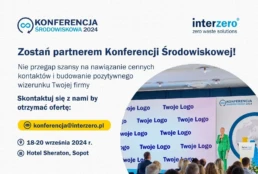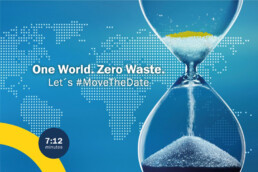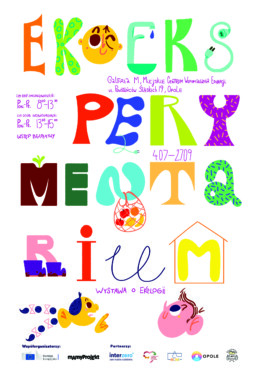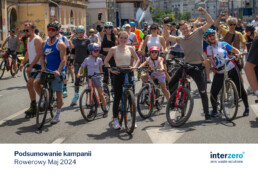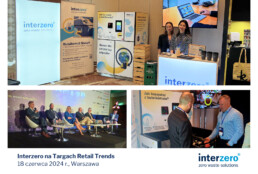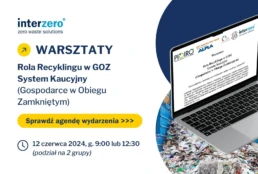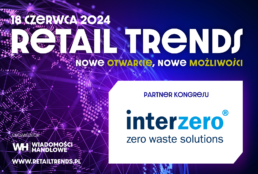Circular solutions are climate solutions - Interzero and its customers are once again postponing Ecological Debt Day
Circular solutions are climate solutions - Interzero and its customers are once again postponing Ecological Debt Day
This year, by August 1, humanity will have used as much from nature as the planet can renew in a whole year - according to calculations by the Global Footprint Network (GFN) for 2024. However, without Interzero's recycling and innovative circular activities, this day would have been reached even earlier. Together with our customers and our broad portfolio of circular solutions, Interzero has once again managed to delay the global Ecological Debt Day by more than seven minutes. Once again, this is concrete evidence of the positive impact our company's service portfolio has on the planet. "We want to work with our customers to make a real impact," he said. says Interzero CEO and owner Dr. Axel Schweitzer.
"With our vision of a world without waste - where available resources are used sustainably and responsibly - we are constantly looking for new ways to push Earth's Overshoot Day further and further away. Our efforts are yielding tangible successes."
We encourage you to read the press release in English HERE
Let's #MoveTheDate!
Carbon footprint measurement during the qualification for the Floorball World Championship with ESD from Interzero
Reducing the environmental impact of the World Floorball Championship Qualifiers (WFCQ)
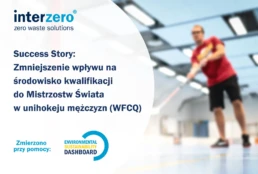
Introduction: In recent years, the global conversation on sustainability has intensified, prompting organisations around the world to assess their impact on the environment. Leading the way, our team undertook a comprehensive environmental impact assessment of the Men's Floorball World Championship Qualifiers (WFCQ). Using Interzero's Environmental Sustainability Dashboard (ESD), we embarked on a journey to assess and reduce the carbon footprint of this major sporting event. Context: The Men's Floorball World Championship Qualifiers (WFCQ) took place in Škofja Loka, Slovenia, from January 31 to February 4, 2024. It involved 5 teams from Slovenia, Belgium, Switzerland, Italy, and Denmark, as well as representatives from the International Floorball Federation (IFF). A total of 216 people, including players and staff, 2,453 visitors, 33 volunteers, and local labour, took part in the tournament.
Challenge: Carbon Footprint of WFCQ Venue
The challenge was clear: how could we ensure that the men's WFCQ, while still being an exciting display of athleticism and sportsmanship, would also be in line with our commitment to sustainability? Considering the many dimensions involved, including venue operations, transport logistics, communication activities, exhibition preparation, accommodation and catering, the task was daunting. However, armed with a dedicated team and our Environmental Sustainability Dashboard, we rose to the challenge. The WFCQ was held at the Poden Arena, located in Škofja Loka (Slovenia) for the entire duration of the event.
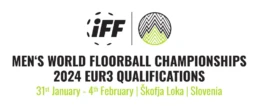
For the purpose of calculating the greenhouse gas emissions associated with a facility, the following impact categories were considered:
- Stationary fuel combustion.
- Overall electricity consumption.
- Heat/cold consumption in the network.
- Water consumption.
- Waste disposal.
Solution: Our methodology was rooted in the principles of Life Cycle Assessment (LCA), ensuring that every aspect of the event was meticulously examined for its environmental impact. From quantifying greenhouse gas emissions to assessing waste generation and transportation. Using the Environmental Sustainability Dashboard, we were able to collect and analyse data from a variety of sources, in line with internationally recognised standards such as the Global Reporting Initiative (GRI).
Results: The results of our analysis were both informative and useful. With a total carbon footprint of 108.1 tonnes of CO2 equivalent, we gained valuable insight into where our efforts could make the most difference. Transportation emerged as the most impactful dimension, accounting for 52% of the event's carbon footprint, primarily due to air travel. Accommodation and catering followed, each contributing significantly to the overall emissions. Armed with this knowledge, however, we didn't stop at just assessing. Instead, we proposed targeted strategies to reduce the environmental impact. From promoting sustainable travel options for attendees to optimising venue energy use and minimising waste generation, every mitigation measure was guided by our commitment to sustainability. By the end of the Men's WFCQ, we had not only achieved our goal of quantifying the event's environmental impact, we had also demonstrated our unwavering commitment to sustainability. Through collaborative efforts and innovative solutions, we transformed the sporting event into a beacon of environmental responsibility, setting a new standard for future championships around the world. In summary, the success of our sustainability initiative for the men's WFCQ is a testament to the power of data-driven decision-making and collective action. Looking to the future, we remain committed to further sustainability efforts, ensuring that future generations can enjoy the thrill of sport without compromising the health of our planet.
What is the Environmental Sustainability Dashboard?
The Environmental Sustainability Dashboard (ESD) is Interzero's solution to help clients integrate sustainability into their business strategy. ESD consists of several steps, starting from context analysis and ending with the creation of a Sustainability Action Plan. A key element among these steps is the ESD tool, a web-based platform designed to help companies calculate the different environmental, social and governance impacts related to their core business and/or products. The impact assessment takes into account different dimensions, such as emissions, energy, materials, water and waste. A wide range of Key Performance Indicators (KPIs) can be calculated, such as greenhouse gas emissions or carbon footprint. For each dimension, specific data is required to calculate the appropriate set of results. Both input and output data are selected and generated based on commonly used standards, such as the Global Reporting Initiative, and literature. The output information can be used not only for communication purposes, but also for technical assessment and can be integrated by the company into its sustainability report. ESD is suitable for companies of all sizes, whether they offer services or products.
Contact
EcoExperimentarium: Discover Ecology in Opole!
EcoExperimentarium: Discover Ecology in Opole!
EcoExperimentarium , a project we are a partner of, is starting its ecological journey to Opole! When and where?
Date: From July 4 to September 27, 2024.
Place: Municipal Education Support Centre in Opole, Powstańców Śląskich St. 19.
What is EcoExperimentarium?
EkoEksperymentarium is a project that shapes and develops good ecological practices in children. It teaches in an interactive way how to consciously shop, save water, or clean. At the exhibition you will find various thematic zones, referring to rooms in the house:
-
BEDROOM: Less is more! Learn how to minimise your possessions.
-
BATHROOM: Every drop counts! Save water and take care of the environment.
-
CUISINE: Eat local, healthy and seasonal! Learn simple ways to change your eating habits.
-
LIVING ROOM: Don't let energy vampires get to you! Save energy in your home.
Why is it worth taking part?
-
You will learn how to save resources and take care of the planet on a daily basis.
-
You will gain practical tips that you can implement in your life.
-
This is a great opportunity to learn simple ways to change your daily habits to be more eco-friendly.
We cordially invite you! This is a unique opportunity to contribute to environmental protection and inspire children to change their habits. More information on the EcoExperimentarium website
Take part in the training "Control of environmental protection inspection in the enterprise".
Take part in the training "Control of environmental protection inspection in the enterprise".
Every company that uses the environment, even to a small extent, should be prepared for a WIOŚ inspection. If you want to go through the entire inspection procedure without any problems, take part in the stationary Interzero training "Environmental Protection Inspection Control in an Enterprise", which will take place on August 8 in Łódź.
Training agenda for WIOŚ inspection in the company
The aim of the training is to introduce environmental protection regulations that relate to the area of WIOŚ control in the enterprise.
During the training you will learn:
- the objectives of the establishment and the organizational structure of the Environmental Protection Inspectorate
- a catalogue of entities that may be inspected by the Inspectorate,
- types of inspections carried out by WIOŚ,
- the course of control in the enterprise step by step,
- control tasks of the Inspection,
- the most important aspects of control in the light of the provisions of the Entrepreneurs' Law Act,
- powers of WIOŚ inspectors during inspections,
- rights and obligations of the controlled entity,
- types of control summary and post-control activities.
The training will be led by: Łukasz Pachucki , Senior Environmental Protection Specialist at Interzero and Interzero Academy Lecturer. Date: August 8, 2024 (Thursday), 10:00-13:00 Location: Interzero Advisory Sp. z o. o., Łódź, 178 Wólczańska Street, building A
Why is it worth signing up for WIOŚ inspection training?
The use of the environment in businesses is much more common than you might think. If your company:
- introduces gases and dust into the air (e.g. from company cars, boiler rooms or generated during technological processes),
- emits greenhouse gases,
- stores waste,
it can be inspected by WIOŚ at any time in a planned or unplanned mode. You will not be informed about an unplanned inspection, so you will not have time to prepare yourself properly! Training in environmental protection inspection will allow you to gain practical knowledge, thanks to which you will prepare your company to receive WIOŚ inspectors and make it easier for yourself to go through the inspection procedure . After completing the training, you will receive an electronic certificate, a set of training materials and 2 weeks of access to online consultations with the instructor.
Who should take part in WIOŚ inspection training in the company?
Training on WIOŚ control in an enterprise is addressed to persons responsible for environmental protection issues, including:
- business owners,
- full-time environmental protection specialists,
- external consultants providing services related to environmental protection.
The recommended level of knowledge for all participants is intermediate or advanced. Limited number of places!
Sign up for stationary training in Łódź >>
We invite you!
Interzero as a partner of the Bicycle May campaign
Interzero as a partner of the Bicycle May campaign: We support sustainable mobility!
In 2024, Interzero proudly announced its next commitment as a partner of the Rowerowy Maj campaign. This initiative, which is the largest campaign in Poland promoting sustainable mobility among preschool children, primary school students, teachers, parents and guardians, perfectly aligns with our company's goals.
What is Bicycle May? Bicycle May is a campaign that encourages the use of bicycles as a means of transport to school. Through fun and gamification elements, the campaign teaches children and young people good habits that stay with them after the campaign ends. Thanks to this, the number of cars transporting students is decreasing, and the areas around schools are becoming safer and more friendly to cyclists. By supporting the Bicycle May campaign, we want to:
- Educate the public about sustainable mobility.
- Motivate children and young people to actively commute to schools and kindergartens.
- Together, create a safe and cyclist-friendly environment around educational institutions.
At the end of the Bicycle May campaign, a picnic was held, during which prizes were awarded to the most active participants. Interzero also organised eco spa and candle-making workshops. We also provided our EcoPacks to the most active facilities, supporting ecological attitudes. The Bicycle May campaign is not only fun and stickers in bicycle diaries.
These are real actions that contribute to changing habits and improving the quality of life in our cities.
The next edition is less than a year away. Get on a bike, encourage your children and students to commute actively, and together we will change our cities for the better!
Retail Trends 2024 summary!
Retail Trends 2024 summary!
The Retail Trends 2024 trade fair took place on June 18, 2024 at the DoubleTree by Hilton hotel in Warsaw. The event gathered hundreds of guests and dozens of exhibitors. The slogan of this year's event was "New opening, new opportunities". Over 80 speakers walked through all stages of Retail Trends. Participants had the opportunity to listen to dozens of lectures and debates. The topics included business models and new sources of revenue in the trade sector. During the substantive discussions on the main stage, our specialist Pawel Sosnowski, Representative of the Management Board for Environmental Regulations, could not be missed. He took part in the debate "Transformation is the only way! How will the deposit system and the green revolution change the retail sector and the packaging market?". The discussions jointly considered, among others, the stages of preparation for the implementation of the deposit system in Polish trade and the food industry and the impact of the CSRD directive on trade-supplier relations and issues related to the green supply chain. The debate was a place for exchanging views on the transformation of the retail sector in the context of sustainability and environmental protection. In parallel to the substantive programme, trade fairs were held, where exhibitors presented the most interesting novelties in the area of FMCG , shop equipment and services and technologies for the retail industry. Starting next year, retail chains will be equipped with bottle vending machines for collecting packaging, in connection with the deposit system introduced in Poland. We presented Sielaff brand recyclers to visitors to our stand, of which we are the exclusive distributor in Poland . The presence of specialists from the manufacturer's side allowed us to answer questions of those interested even more precisely. Thank you for the opportunity to participate in such a valuable event.
We hope to see you next year!
More information about the event can be found on the organiser's website.
Check out the agenda of the 2024 Environmental Conference!
Check out the agenda of the 2024 Environmental Conference!
The Interzero Environmental Conference will be held in Sopot on 18-20 September, where we will discuss the most important and current topics related to legal regulations, environmental protection and ESG.
This year's event will focus in particular on issues related to legal changes dictated by the transposition of the EU SUP and PPWR directives, the introduction of a nationwide deposit system in Poland from 2025, as well as sustainable development models for business. The agenda includes presentations by speakers from brands on the Polish market, business organisations and the environmental protection industry. Read on to find out what else you will find in the programme of the Interzero 2024 Environmental Conference - the full agenda is available on the event page .
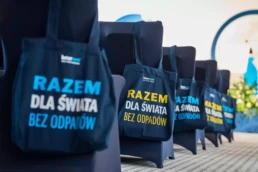
Deposit system
As of 2025, a deposit system will be in force in Poland, which will cover selected beverage packaging made of glass and plastic. This change is a real challenge for entrepreneurs who are obliged to meet certain obligations, including achieving a specific level of selective collection of packaging waste, keeping records or concluding an agreement with an entity representing them in the deposit system. The conference programme will include several lectures devoted strictly to the issue of the deposit system in Poland. Paweł Sosnowski, Representative for Environmental Solutions at Interzero, will give a lecture entitled "Is a deposit system without EPR a recipe for problems?", and Hanna Walczak, Implementation Manager at GS1 Polska, will talk about database standardisation in the lecture "Database for the deposit system - what is worth knowing about it?". A panel discussion "The deposit system - a threat or an opportunity for waste management?" is also planned, with the participation of, among others: Interzero specialists, a representative of a retail chain and an expert in the environmental protection industry with scientific and research achievements.
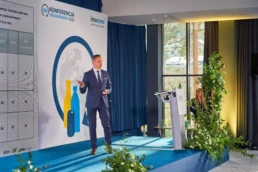
Interzero, together with the Polish Chamber of Packaging Recovery and Recycling, will establish an entity representing entrepreneurs in the deposit-refund system - find out more HERE .
The EU PPWR (Packaging and Packaging Waste Regulation) directive is inextricably linked to this change, setting top-down levels for the collection of packaging waste. Paweł Sosnowski will present the assumptions of this legal act in his lecture "PPWR, or new solutions in waste management"; in the discussion panel "PPWR - how much will it cost us?" experts in the circular economy - including Piotr Mazurek from the Lewiatan Confederation and Robert Szyman, Director of the Polish Association of Plastics Converters - will discuss the challenges in the design, production and recycling of packaging in the face of new regulations.
Sustainable development in business
In addition to the topics devoted to the latest changes in national and European law, the Environmental Conference will discuss issues of the circular economy, integrated environmental solutions and sustainable business.
Circular circulation of raw materials and products is an issue that will interest all entrepreneurs who want to reduce the harmful impact on the environment and reduce production costs. This year's Environmental Conference will feature experts from leading brands on the Polish market - including Wiktoria Płocha, Sustainability Business Partner at IKEA Retail, with a lecture entitled "Circularity - do we know where it begins?", Joanna Leoniewska-Gogola, Deputy Director Sustainability Consulting Central Europe at Deloitte Advisory, with a lecture entitled "Circularity strategy of a company in the context of the requirements of the non-financial CSRD report" and Jacek Płaza, Chief Sustainability Officer at Decathlon Polska, with a lecture entitled "How to reduce waste and develop new business models?".
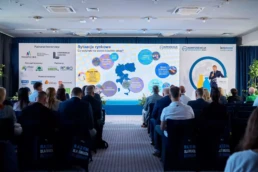
Mateusz Jemiol, advertising producer and director, and CEO of Mova Film, will talk about ESG from a marketing perspective in his lecture "Can the topic of garbage captivate crowds? A recipe for an effective social campaign."
The progressive technological development can go hand in hand with ecology - and this is thanks to digital tools supporting waste management. Aleksandra Mikiel, Operations Director at Interzero, will talk about Interzero Waste Platform - a waste management tool.
Join the event today!
Do you want to become our partner?
Write to konferencja@interzero.pl
Summary of the Open Day at the Odra Cement Plant
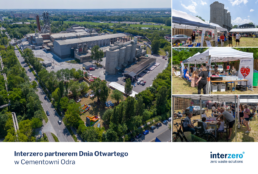
photo: Odra Cement Plant
Summary of the Open Day at the Odra Cement Plant
Cementownia Odra , the oldest operating plant of this type in Poland, opens its gates to the general public every two years. This year's event was exceptional because it was organised for the first time since the pandemic. As in previous years, it attracted crowds of visitors who had the opportunity to see the facility and explore the secrets of cement production, including technologies that minimise the impact of the installation on the environment. Wojciech Putra, president of Cementownia Odra, emphasised in his speech that good neighborliness requires trust, and the Open Day is an excellent opportunity to see for yourself what actions are taken in the area of social and environmental responsibility. Residents of Opole learned, among other things, that the cement production process is waste-free and at the same time allows for the management of many difficult wastes, such as:
- Fly ash (waste from power plants or combined heat and power plants)
- Granulated blast furnace slag (waste from the steel industry)
- Reagipsy (waste from the flue gas desulfurization process)
- Copper slag (waste from copper smelters)
- Steel slags (by-product of the converter process)
- Alternative fuels (municipal and industrial waste)
Currently, 40% of the raw materials used in the production of Portland cement in the Odra Cement Plant come from waste, and 60% of the energy is produced from alternative fuels. In addition to sightseeing, the organisers provided a number of attractions, including performances by artists singing the greatest hits from the Opole festival and a festival for children.
The Open Day at Cementownia Odra showed how this plant combines tradition with innovation and how it cares for the environment and the local community. Interzero was one of the partners of the Open Day at Cementownia Odra.
Workshops on the Role of Recycling in the Circular Economy and in the Operation of the Deposit System
Workshops on the Role of Recycling in the Circular Economy and in the Operation of the Deposit System
We invite you to unique workshops devoted to the role of recycling in the Circular Economy (CE) and the operation of the deposit-refund system . The meeting will be held on June 12, 2024 at PRT Radomsko Sp. z o. o. (ul. Geodetów 8, 97-500 Radomsko).
The meeting is organized by the Polish Chamber of Packaging Recovery and Recycling in cooperation with Interzero, CPG Cluster, Ecokaucja SA, and the Foundation for Ecological and Educational Solutions "GREEN".
During the workshops we will discuss key issues related to legislation, eco-design, recovery and recycling of packaging. We will then move from theory to the practical conditions of packaging waste management.
The workshop programme includes:
- Introductory presentation: "The impact of recycling on the circular economy".
- Discussion panel: "Practical aspects of the deposit system".
- PET Bottle Recycling Plant Tour: Discovering the Process and New Life for Plastic
Check out the full event agenda
The meeting is divided into two groups. The first group will meet at 9:00 a.m. and the second at 12:30 p.m.. Each meeting will begin with a discussion on recycling legislation and practice in the circular economy, and then participants will have the opportunity to tour the PRT Radomsko plant and see the PET bottle recycling installations and process live. Details on how to register at the link.
We invite you to participate for free! The number of places is limited, the order of applications decides.
See you at the workshops!
Visit the Interzero stand during the Retail Trends 2024 fair!
Visit the Interzero stand during the Retail Trends 2024 trade fair!
On June 18, the next edition of the trade fair addressed to retail representatives - Retail Trends - will be held at the DoubleTree by Hilton Hotel & Conference Center.
The slogan of this year's event is "New opening, new opportunities".
The economic situation in recent years makes us pay more attention to consumers and their needs. This also forces entrepreneurs to analyse investment areas, especially related to technology and digital transformation, as well as to think more deeply about the use of artificial intelligence and machine learning in business.
As Interzero, we will present our Sielaff brand bottle dispensers to the event participants, which may soon become necessary in every larger retail chain, because from 2025 a deposit system will apply in Poland. Our representatives will be happy to provide more information about the devices, present the functionality of the selected model, and advise interested parties on the appropriate solution tailored to their needs. You will find our stand right next to the lecture hall and the food court!
We also cordially invite you to listen to the debate entitled: 'Transformation is the only way! How will the deposit system and the green revolution change the retail sector and the packaging market? Pawel Sosnowski , Management Board Representative for Environmental Regulations.
During the debate, participants will jointly consider, among others: at what stage of preparations for the implementation of the of the deposit system is the Polish trade and food industry, how the CSRD directive will change trade-supplier relations, and how to work on a green supply chain.
More information about the event can be found on the organiser's website.
